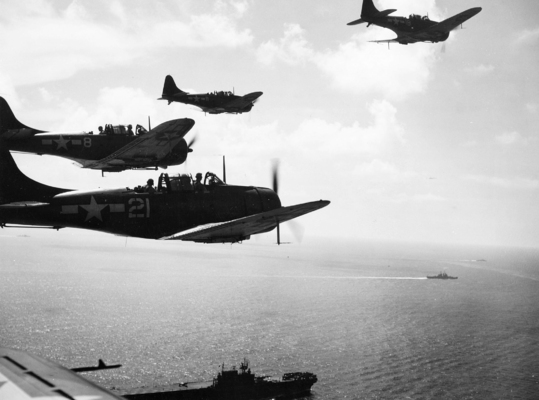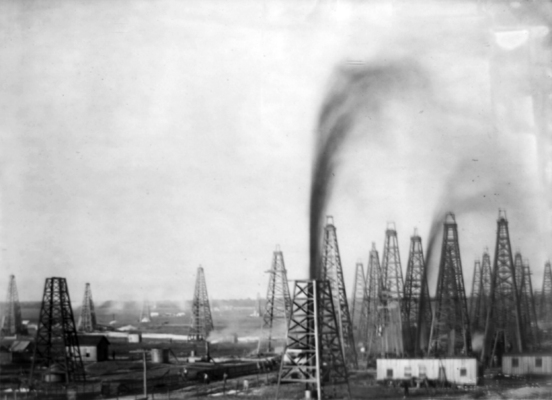
by Fred Beach and Michael E. Webber Thursday, January 5, 2012

U.S. Navy Douglas SBD-5 Dauntless dive bombers over aircraft carrier USS Enterprise after strikes against Palau in March 1944. U.S. Navy

The Spindletop oil discovery in eastern Texas in 1901. Library of Congress Prints and Photographs Division
World War II U.S. Gen. Omar Bradley is often cited as the originator of the famous military quote: “Amateurs study tactics, professionals study logistics.” Irrespective of its origins, the adage holds true for most extended conflicts — and World War II is no exception. Managing logistics for the production, movement and consumption of energy was one of the critical determinants of success during the war.
For example, in 1939, the U.S. Navy consisted of a grand total of 380 ships. By the end of the war, the fleet had grown to 6,700, of which 1,200 were auxiliary ships used for transporting fuel, ammunition and food. In the same six-year span, the U.S. produced more than 300,000 aircraft, 100,000 armored vehicles and tanks, and several hundred thousand bulldozers, halftracks, trucks and jeeps. Amidst this massive industrial mechanized mobilization, the U.S. also managed to conduct the largest single government development effort ever undertaken at that time: the Manhattan Project. Employing more than 130,000 people and requiring $22 billion in today’s dollars, the project developed the atomic bomb in just three and a half years.
This explosion of production leading up to and during the war was not unique to the U.S. Both Germany and Japan worked feverishly to supply their armies and navies with war material to counter the production of the U.S. and its allies, with a high degree of success. The Germans' technical and industrial prowess in designing and manufacturing was legendary, and led to breakthroughs in armor, artillery, aviation, rocketry, submarines and small arms. Likewise, the Japanese produced some of the most capable aircraft and ships of the era.
Although Germany and Japan made great quantitative and qualitative strides in arming and supplying their forces, the U.S. had two key strategic and logistical advantages: oil and water. Of course, other factors played a major role in the U.S. and its allies winning the war, but these two natural resources played a larger role than many people realize.
© 2008-2021. All rights reserved. Any copying, redistribution or retransmission of any of the contents of this service without the expressed written permission of the American Geosciences Institute is expressly prohibited. Click here for all copyright requests.